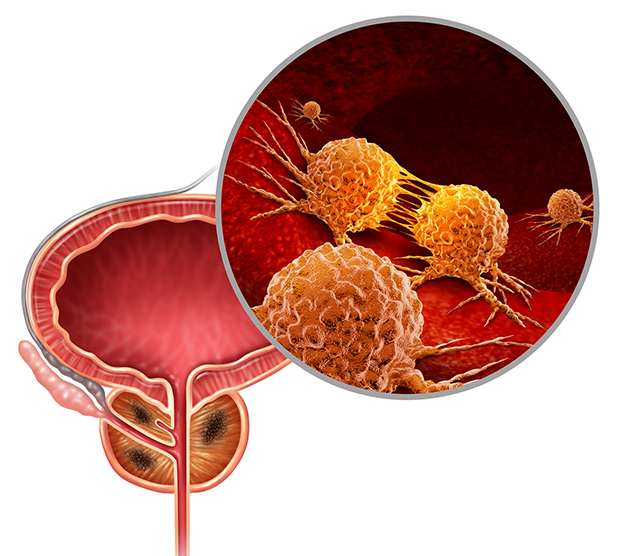Prostate Cancer
Home » Braving Cancer Together » Prostate Cancer

Prostate cancer occurs in the walnut-shaped gland called the prostate, which produces the seminal fluid that nourishes and transports sperm.
Some prostate cancers grow slowly and stay within the prostate gland for many years and can be monitored. However, other types are aggressive, spreading quickly, and thus require definitive treatment.
Therefore early detection of prostate cancer is critical so that it can be treated while still contained in the prostate.


Symptoms of Prostate Cancer
Patients with early-stage prostate cancer usually do not experience any signs or symptoms. But advanced prostate cancer may cause:
- Difficulty urinating
- Decreased force in the stream of urine
- Blood in the urine
- Erectile dysfunction
- Unintended weight loss
- Blood in the semen
Bone pain
Risk Factors for Prostate Cancer
The following factors increase the risk of prostate cancer:
Older age: Men over the age of 50 are more likely to develop prostate cancer.
- Race: For unknown reasons, black men are at increased risk of prostate cancer compared with men of other ethnicities. Black men are also more likely to have aggressive or advanced prostate cancer.




Family history: Patients with a parent, sibling, or child who has been diagnosed with prostate cancer are at increased risk. A family history of breast cancer may also increase the risk of prostate cancer.
Obesity: In obese men, prostate cancer is more likely to be aggressive and to recur after initial treatment.
Screening for Prostate Cancer
Men older than age 55 should get screened for prostate cancer. Men should start screening at a younger age if there is a family history of prostate cancer or if they are African American. Screening usually consists of:
- Digital rectal exam (DRE): During the exam, the physician inserts a gloved, lubricated finger into the patient’s rectum to examine their prostate, looking for abnormalities in the texture, shape, or size of the gland.
- Prostate-specific antigen (PSA) test: The patient will submit a blood sample that will be analyzed for PSA, a substance produced by the prostate gland. Abnormal levels of PSA, it may indicate prostate infection, inflammation, enlargement, or cancer. If initial tests show an abnormality, the patient may also need to complete additional tests.
Diagnosing Prostate Cancer
If there is a concern after screening, then further tests can help to determine whether prostate cancer exists.
- Other blood tests: Tests such as a PHI or free PSA percentage may help to determine the risk of having prostate cancer and the need for a biopsy.
- Urine tests: Tests such as an ExoDX or PCA3 may be used to also help determine the need for a biopsy.
- Magnetic resonance imaging (MRI): In some situations, your doctor may recommend an MRI scan of the prostate to create a more detailed picture. MRI images may help your doctor plan a procedure to remove prostate tissue samples.
- If the above testing shows a higher than average risk of the presence of prostate cancer then a biopsy is usually recommended. This is usually done under ultrasound guidance where a biopsy needle is directed into the prostate to take samples of the prostate. These samples are sent to the pathology lab where a pathologist examines them under the microscope to determine the presence of prostate cancer.
Treatment Options
Treatment for prostate cancer will depend on how fast the cancer is growing, whether it has spread beyond the prostate, the patient’s overall health, and the benefits or side effects of treatment.
Early-stage prostate cancer may not require definitive treatment and patients may only need active surveillance, routine blood testing, rectal exams, and prostate biopsies to monitor progression. However, if the cancer is more aggressive as shown on the Gleason score, then surgery or radiation therapy is performed. Ablative therapy such as cryosurgery or high intensity focused ultrasound may be options for some men. In cases where the cancer has already spread then hormone therapy, chemotherapy, immunotherapy, and targeted drug therapy may be options.

